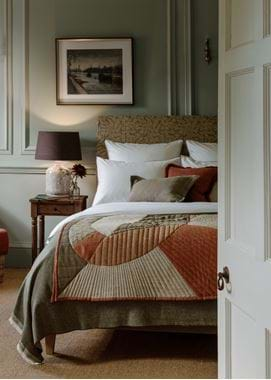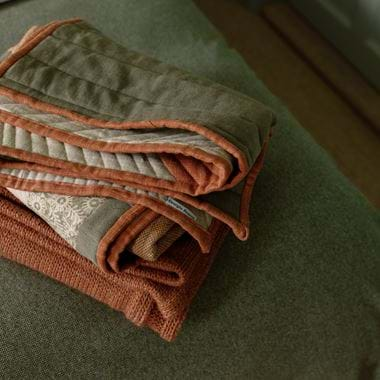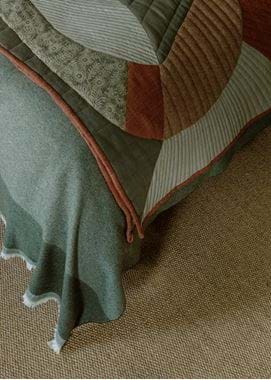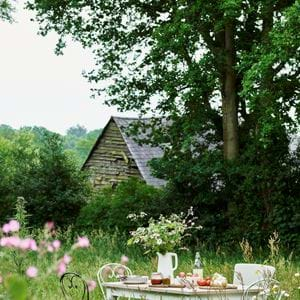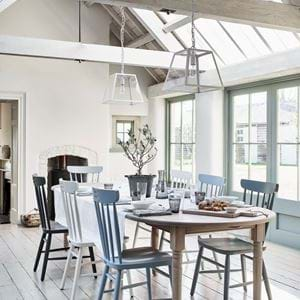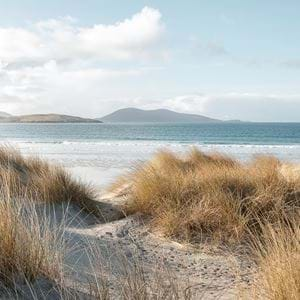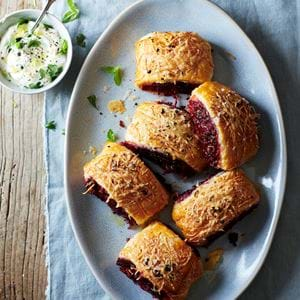The stitches that connect us
The stitches that connect us
Stitched slowly and carefully over days and weeks, if not months, quilts are one of those crafted objects that have recently found their way back into many more of our homes, both as a finished piece and as a pastime. Playing into the idea of slow living, and often simple enough to make on a lap or at a kitchen table, it’s easy to see why they have such a contemporary appeal. But, with a long, colourful and creative history, is there more to our renewed connection with quilts than meets the eye?
In Canada, during the Second World War, hundreds came together to collectively sew thousands of quilts for the Canadian Red Cross. Sent to Britain and other war-torn European countries, these quilts were stitched anonymously as a practical and symbolic outstretched hand of friendship, providing comfort for many whose homes had been devastated by conflict.
Meanwhile, in Japanese-occupied Singapore, the women of the Changi prisoner of war camp, many British or Australian, sewed a patchwork quilt to send to the neighbouring men’s camp. Each embroidered their own square with symbols of patriotism and identity as a way of communicating their survival and their hope for freedom to their loved ones.
These may be just two stories from a short period in history, but they’re joined by countless others telling a tale of quilts and their more than practical meaning. From the spiritual star quilts which, to the Lakota people of North America, represent the bright Morning Star and its connection between this life and the next, to marriage quilts, often stitched with sunburst patterns symbolising the dawning of a new day.
Picture a quilt in your mind’s eye and, chances are, you’re also picturing patchwork. But the two aren’t one and the same: quilting is a method of joining together layers of fabric, while patchwork is a way of creating one piece of cloth out of several stitched side-to-side. Patch-less quilting is often used for clothing to create warmth (think down-filled coats). There are also whole-cloth bedspreads, quilted in intricate patterns designed to showcase a sewer’s skill. These were especially popular from the 17th century, and making them became an important part of the rural economy in areas of Wales and northern England, although owning one was usually the preserve of the wealthy because of the large amounts of expensive cloth involved.
It’s probably fair to say though, that the lion’s share of emotional resonance belongs to patchwork. Perhaps that’s because, being a way to make the very most out of very little, patchwork quilts are often born out of times of hardship.
No quilts demonstrate creativity in the face of hardship or restriction more than those of Gee’s Bend. Many of the people that live in this rural Alabama hamlet, to this day, are descended from enslaved men and women. Faced with unimaginable difficulties, both before and after their freedom came, the women of Gee’s Bend sewed quilts as a basic necessity, but developing their own distinctive style in the process: a bold and improvised mix of colours and forms, unlike any other patchwork, through which both the maker’s unique artistic voice and their community’s traditions can be heard.
Another meaningful string to patchwork’s bow is the way the technique invites collaboration. With many patterns designed in a series of blocks, each person can easily cut and stitch their own section before they are brought together. But, again, it’s about more than practicality. In piecing the quilt as a family or as a community, you are metaphorically sewing into it your combined, connective strength, hope and good wishes, something that’s evidenced in the tradition (that exists in many cultures) of collectively making a quilt to mark important life events like births and marriages.
Whether collective or individual, patchwork or whole-cloth, quilts are rich in anthropological significance. Throughout history, they’ve evolved from their essential purpose – to keep us warm – to crafted objects that are, aptly, layered in meaning. Be that an outlet for people to mark their place in the world when no other existed, as a patchwork of energy shared between generations through the resonance of worn textiles and careful stitching, or, quite simply, as an expression of friendship, solidarity or optimism said in the most comforting of ways.
The Neptune quilt
The quilt pictured was created for us by the textile artist Georgia Bosson. It was commissioned to tell a tale of our roots in craftsmanship and purposeful design (and our founders’ love of sailing) through the abstract representation of a spinnaker sail, and was made using Neptune fabrics new and old. Working from her studio in London, Georgia’s quilts are both rich in layered heritage – evolving from traditional patchwork techniques – and refreshingly contemporary.
If you'd like to see more of Georgia's designs, visit her studio shop where you can also pre-order the Neptune quilt.

